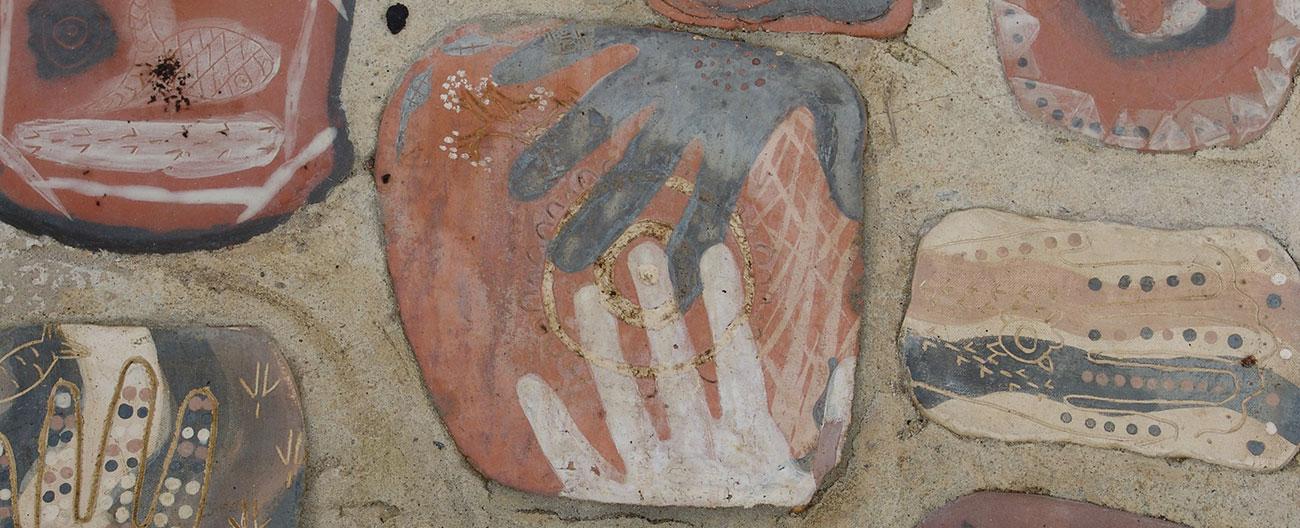Our First Nations People
The Wurundjeri Woi-wurrung’s relationship with the land extends back thousands of years where ‘Bunjil’, their creator spirit, formed their people, the land, and all living things.1 The Wurundjeri Woi-wurrung people take their name from the word ‘wurun’ meaning the Manna Gum (Eucalyptus viminalis) which is common along ‘Birrarung’ (Yarra River), and ‘djeri’, the grub which is found in or near the tree. “Country”, when used by Aboriginal people including the Wurundjeri Woi-wurrung people, describes the lands, landscapes, waterways and seas. The term “Country” also contains complex ideas about law, place, custom, language, spiritual belief, cultural practice, material, sustenance, family and identity. Therefore, the Wurundjeri Woi-wurrung people have a special interest in preserving not just their cultural objects, but the natural landscapes of cultural importance. The acknowledgement of broader attributes of the landscape as being culturally valuable which requires protection (encompassing, among other things, a variety of landforms, ecological niches and habitats as well as continuing cultural practices and archaeological material) is essential to the identity and wellbeing of the Wurundjeri Woi-wurrung people.2
The arrival of Europeans bought significant and brutal changes to the lives of First Peoples. Their population was decimated and the natural balance of the country changed forever due to frontier wars, disease, introduced animal and plant species and the dispossession of land and culture.
As knowledge grew of the violent atrocities committed on First Peoples, local and international groups lobbied Victoria’s newly independent parliament to prevent further violence and assist surviving members of First People communities. This resulted in successive legislation designed with the intent to Protect Aboriginal People. Embedded in actions stemming from the policies were acts of assimilation and eradication of First Nation people.
From 1936, Australia introduced successive legislation and policies for the “Protection of Aboriginals” resulting in greater dispossession of land and separation of families. For example in 1869, the Governor of Victoria had the authority to order the removal of any Aboriginal child to a reformatory or industrial school. The Victorian Aboriginal Protection Act 1886, also known as the “Half Caste Act” resulted in the removal of all “Half Caste” Aboriginal people under the age of 35 from the Missions and Reserves. Separated from their families and communities, residents of the Missions and Reserves had to seek permission to see family living in the community. Those excluded from the Missions and Reserves required permission to visit family or be on the reserve or mission. Further, the Aboriginal Protection Board was empowered to apprentice Aboriginal children when they reached 13 years of age.
In Victoria, a total of six reserves and missions were established, Ebenezer in the north-west, Framlingham and Lake Condah in the south west, Lake Tyers and Ramahyuck in Gippsland and Coranderrk in the east, near Healesville. First Nations people forced to live on the reserves and missions were subjected to rigid routines and rules with all cultural and traditional activities banned.
Coranderrk
The history of Coranderrk Aboriginal Station (1863-1924) in Healesville is significant in the lives of the Wurundjeri Woi-wurrung people and descendants of other First Nations people who lived on the reserve.
Coranderrk was established in 1863 by the Victorian Aboriginal Protection Board. Coranderrk station was located on the traditional lands of the Wurundjeri-balluk cultural group (William Barak’s group) and was established for the remaining Wurundjeri Woi-wurrung people and members from other Kulin (Victorian) cultural groups who were forcefully displaced from their traditional lands.
The reserve that originally comprised 2300 acres of land was later extended to 4850 acres, was situated on the picturesque and rich river flats bordered by the Yarra River, Badger Creek, Watts River and the slopes of Mount Riddell.
Coranderrk was considered a success by the prevailing governments. The First Peoples who moved to Coranderrk believed the station would remain a permanent protectorate, a homeland where they could safely avoid the deprivations of disease and frontier conflict. First Peoples language, culture and rituals were banned and weapons were required to be surrendered.
In the 1870s, when officials threatened to close Coranderrk and sell off its rich grazing land to envious settlers, Wurundjeri Woi-wurrung elder William Barak led the first Coranderrk Rebellion. William Barak marched with other men from Coranderrk residents to Melbourne to claim ownership of land he called "my father's country". For Barak, Coranderrk was both a home and a last link to his vanishing culture and heritage. This is an early example of First Nations successfully advocating for their rights to land and self-determination.
By the turn of the 20th century, Coranderrk's population was in decline. The decline was due in part to introduction of legislation that stated that First People of mixed race or ‘half castes’ were no longer able to live on reserves such as Coranderrk. This law resulted in the forced removal of people aged under 35 from the reserve, breaking family and community bonds, disrupting culture and knowledge. Young people were required to seek permission to visit families and family members had to seek permission to leave the reserve. The intent behind the legislation was that the young residents removed from the reserve would be included in local communities; however, this was not the case.
With a declining population Coranderrk met a steady demise and was closed in 1923. The bulk of Coranderrk station was gazetted for allocation under the Soldier Settlement policy following the two world wars. Former Coranderrk residents who served in the wars received none of this land. Of the original station, only a half-acre cemetery was given back to the people of the Wurundjeri Woi-wurrung. Coranderrk reserve remains deeply symbolic of a continuing First Nations struggle for land, culture and identity.
Many Wurundjeri Woi-wurrung residents in the local area are descendants of Coranderrk residents.
_______________________
References
- ‘An Aboriginal History of Yarra’, (2013), 48(4), Agora, 59-65.
- Wurundjeri Woi-Wurrung Cultural Heritage Aboriginal Corporation, Ancestors and Past (Web Page) https://www.wurundjeri.com.au/
- European Settlement, Wurundjeri Walk (Web Page) https://wurundjeriwalkhistory.wordpress. com/european-land-acquisition-settlement-1830-current/


